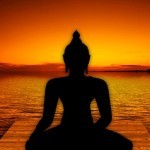01 Oct The Great Art of Doing Nothing
 Tiffany is looking at me as if I’ve lost my mind. She is a corporate executive for an international, brand-name company; a new mother, a sister, a friend, a daughter and wife. She struggles to control her diet and stay fit. She wants to accomplish more with her time, not less. “Do nothing?” she asks plaintively. “And do what?”
Tiffany is looking at me as if I’ve lost my mind. She is a corporate executive for an international, brand-name company; a new mother, a sister, a friend, a daughter and wife. She struggles to control her diet and stay fit. She wants to accomplish more with her time, not less. “Do nothing?” she asks plaintively. “And do what?”
Nothing’s wrong with accomplishing a lot, as Tiffany does. Western culture is focused on achievement which requires a lot of “doing.” People are asking more of their lives than ever before – we want to be successful financially, and have perfect health and great relationships. These are laudable aspirations, but we’re out of balance, at the expense of non-doing or just “being.” We’ve lost the great art of doing nothing at all.
I knew nothing about this until I spent a year at an ashram in India. It took awhile to wind down from my manic Western pace, but after I did, I fit in quite well. There was plenty of time to sit by the river, watch the clouds and cows grazing, meditate, enjoy leisurely meals, and spend lazy afternoons chatting with friends. Life was so relaxed; we thought we were getting a lot accomplished if we mailed a letter that day.
Of course, the realities of needing to earn a living intruded, and it was time to go back to work. Too much leisure is deadening to the spirit which wants to be of service to its fellow beings. But I learned the great value of doing nothing at all, sometimes referred to as meditation. Some meditations suggest watching the breath or the thoughts: some concentrate on a mantra or sound. Some listen, which was especially delightful in the tropics, with the sounds of birds and roosters reminding us to wake up. All meditation methods involve doing nothing productive. They teach us to just “be.”
One way to incorporate doing nothing into a busy life is to take up a meditation practice. A few minutes of quiet inwardness can balance many hours of outward doing-ness. However, I am reticent to prescribe meditation to my patients, as it often becomes one more item on the dreaded to-do list. It’s often easier to do nothing whenever you can find a moment, such as in the car when you get home before going into the house.
The point isn’t to live a life of non-doing. Instead, we can incorporate doing nothing into our lives in precious bits of time. We have to give up chastising ourselves for taking that time. We need to question our high standards for productivity. If we don’t, we’re in danger of losing the connection to that which makes life most meaningful.
© 2014 Catherine Auman This article is an excerpt from Catherine’s book Shortcuts to Mindfulness: 100 Ways to Personal and Spiritual Growth


Sorry, the comment form is closed at this time.